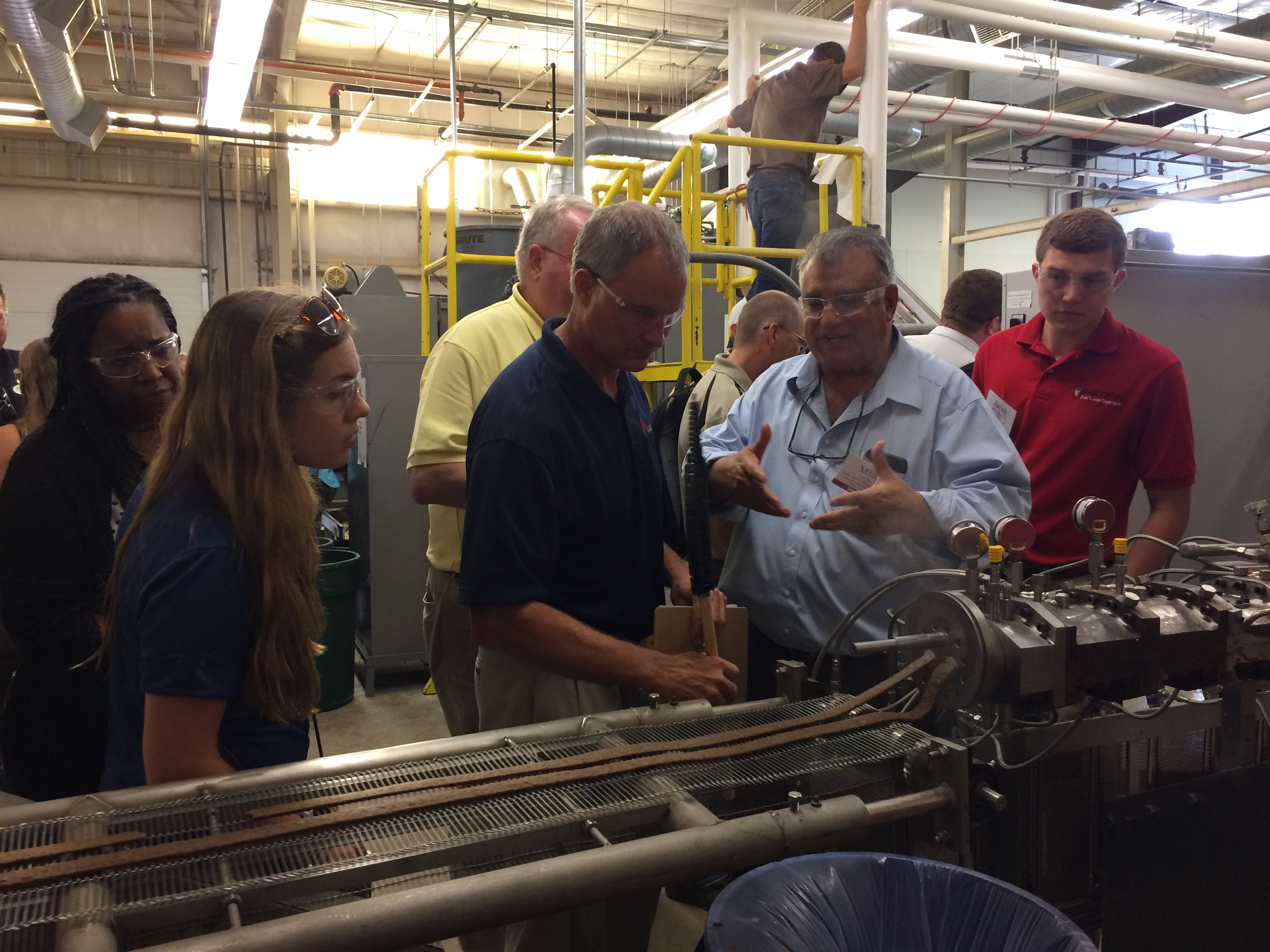Extruders are the workhorses of the pet food and treat industry. A single extruder can produce more than 100 million lbs. of pet food per year. Controlling the complex process parameters of extrusion cooking is the challenge behind consistently producing pound after pound of quality products. In July, Texas A&M’s Process Engineering Research & Development Center (PERDC) hosted its third annual practical short course in extruded pet food and treats on its campus in College Station, Texas.
For the 45 attendees, it was back to school for three jam-packed days of educational presentations and equipment demonstrations from industry experts. Attendees arrived from across the U.S. as well as five countries, representing processors, suppliers and industry associations. Some attendees were new to their companies and taking the course to learn more about their new responsibilities, but many were seasoned veterans seeking professional development to expand their understanding of extrusion cooking.
Center stage expertise
Director of the Texas A&M Engineering Experiment Station’s PERDC, Mian Riaz, Ph.D., opened the course with the traditional Aggieland “Howdy” at the welcome reception sponsored by Kemin Nutrisurance, Inc. Riaz has worked for the Texas A&M University system for 26 years, leads the extrusion technology program and has been published extensively on extrusion and other related topics. From the opening presentation on the principles of extrusion by Riaz it became clear that extrusion cooking is not a fix-it-and-forget-it process.
Riaz detailed the reasons extrusion is such a popular method of pet food and treat processing. Extrusion cooking is energy efficient, pasteurizes raw materials, produces very little process effluents or waste and is flexible in the raw materials that can be used and the finished product characteristics that can be produced.
Galen Rokey, process technology director of companion animal division for Wenger Manufacturing, Inc., covered multiple topics during the short course and succinctly described extrusion cooking as the process whereby biopolymers such as starch and protein are plasticized in food by a combination of heat, pressure, shear and moisture resulting in the denaturization of the protein and the gelatinization of the starch and the exothermic expansion of the extrudate. Sounds simple, right?

Raw materials can easily equal more than 60% of the cost of finished products and processors are managing an increasing variety of ingredients with the responsibility of properly formulating the ingredients to deliver the required nutrients. Alaina Mooney, technical analyst and nutrition manager for Wenger Manufacturing, Inc., took a detailed look at ingredient categories from the variability of protein, fat and ash content in different protein sources to the wide range and percentage of specific fatty acids available in different fats and oils. Mooney covered carbohydrates, fiber, vitamins and minerals as well, with a focus on overall diet requirements and validating nutritional adequacy.
Patrick Burke, president and CEO of Omaha Industries, Inc., reviewed meat sources, preparation and the pros and cons of the different finished formats. Additives to optimize pet food quality were covered by Lynn Deffenbaugh, Ph.D., technical sales manager for Kemin Nutrisurance, Inc. She discussed controlling water activity, microbial growth, storage and post-packaging considerations that all can impact product palatability.
Hardware topics covered ingredient storage and conveyance from Jonathan Thorn, executive director of process technology for Schenck Process, LLC. Mixing, preconditioning, extruding, coating, drying, blending and packaging rounded out this category.
For software or processing conditions, the speakers took a deep dive into the cooking process extruders offer, why it works the way it does and how to manage the independent variables — moisture, thermal energy, mechanical energy and retention time — to repeatedly produce the required product characteristics.
More to consider
Although extrusion cooking was the predominant focus of the course, Brett Cutler, application sales engineer with Baker Perkins, Inc., provided a thorough review of pet treat forming, sizing and baking. A discussion of fresh, frozen, dehydrated, freeze-dried and rawhide products included a look at high pressure pasteurization and irradiation methods used to kill pathogens. And not to be left out, retorted pet foods were briefly covered as well. Seemingly everything from soup to nuts, or more apropos from stews to kibble, was addressed.
Repeatedly producing pet foods or treats that meet the finished product specifications at the time of production throughout shelf life involves complex testing, monitoring with a focus on quality and food safety from start to finish. Leah Wilkinson, vice president of public policy and education for the American Feed Industry Association, shared information on Salmonella prevalence in pet food and treats, key areas addressed in the Food Safety Modernization Act (FSMA) relevant to pet food processing and how FSMA differs from a Hazard Analysis and Critical Control Point (HACCP) program.
Texas A&M’s practical short course in extruded pet foods and treats provided a broad, fast-paced education in the classroom on all the parameters affecting final
product results. A series of hands-on product demonstrations every afternoon at the University’s extrusion pilot plant
illustrated many of the concepts discussed in class.
The purely educational focus in a beautiful campus environment provided the right atmosphere to truly appreciate the complexities of extrusion cooking and to respect the combination of talent necessary to consistently produce ton after ton of safe, palatable and nutritious pet foods and treats.
Find more articles related to pet food processing equipment on our Equipment page.



